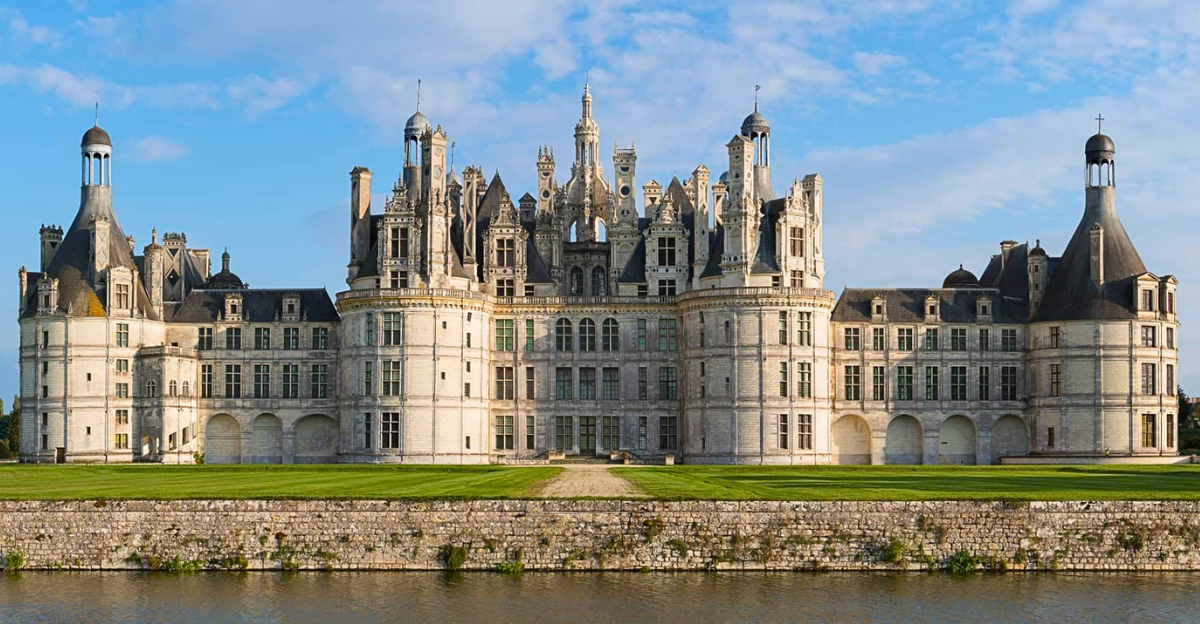
Medieval castles are among the world’s most captivating historical structures, blending architectural ingenuity, military strategy, and centuries of legend. Far from being mere monuments, castles were bustling centers of administration, justice, and daily life, housing everyone from lords to laborers.
Eventually, these castles saw their demise, but their romantic allure endured. They shaped architectural revivals and remained pivotal in national histories and tourist imaginations.
1. Neuschwanstein Castle – Germany
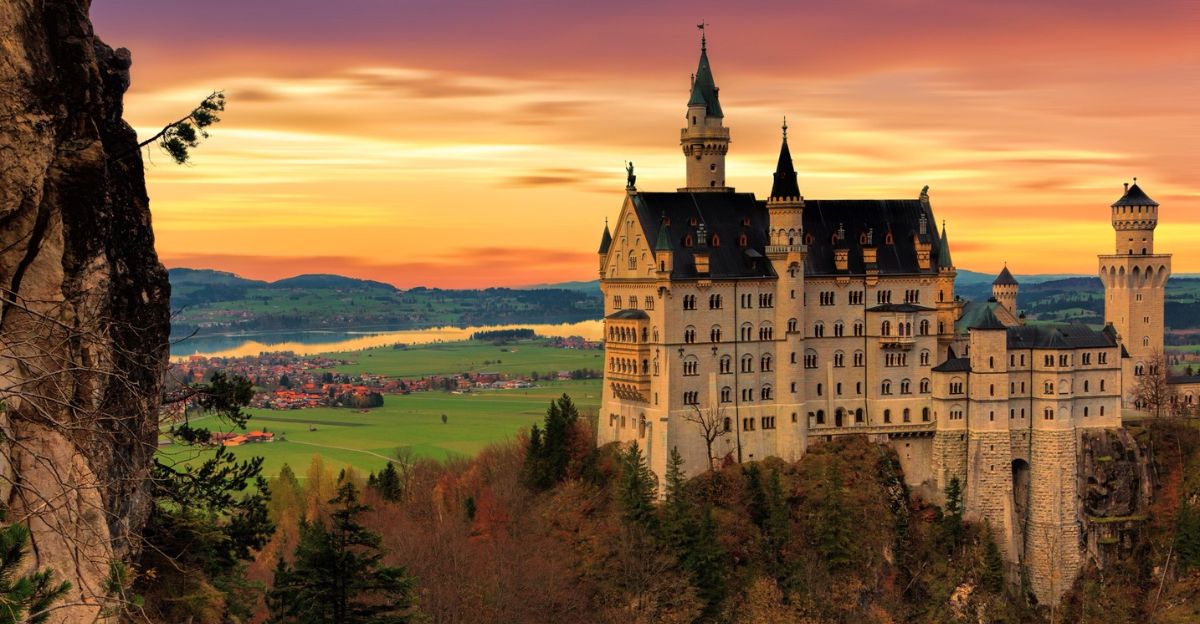
King Ludwig II of Bavaria built Neuschwanstein atop a rocky ridge facing the Alps, beginning in 1869 as a romantic, medieval-inspired retreat. The castle was designed by Christian Jank and architect Eduard Riedel and inspired by medieval legends, German romanticism, and Wagnerian operas.
Construction began in 1869 with extensive site preparation, and though Ludwig envisioned more than 200 rooms, only about 15 were completed before his mysterious death in 1886. The castle overlooks the Tegelberg and Pöllat Gorge and is surrounded by picturesque lakes, enhancing its fairy-tale allure. It was quickly opened to the public after Ludwig’s death to cover costs, and today it attracts over a million visitors annually.
2. Château de Versailles – France
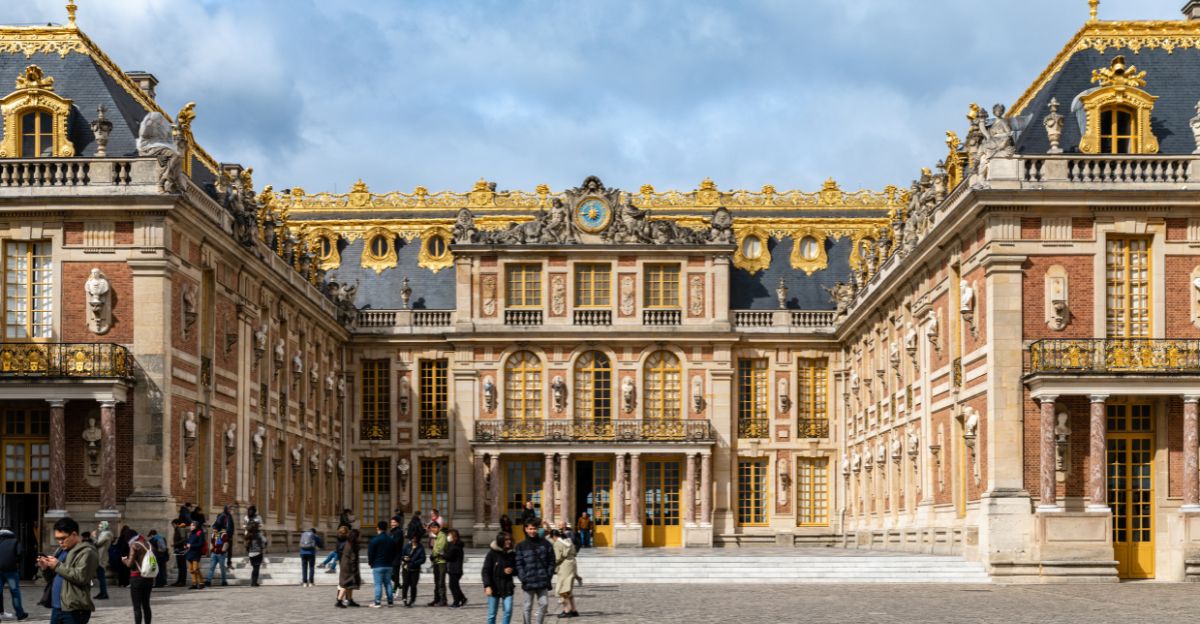
The Château de Versailles is one of the world’s most celebrated palaces, renowned for its grandeur, opulent design, and pivotal role in France’s history. The story began in 1623, when King Louis XIII constructed a modest hunting lodge surrounded by forests and wetlands near the village of Versailles. Although this early structure was simple, it marked the genesis of a transformation that would reach imperial heights.
The meteoric rise of Versailles began with Louis XIV, who, as a young king, developed a powerful affinity for the location. From 1661 onward, Louis launched continual expansions. Relying on famed artisans such as architect Louis Le Vau, painter Charles Le Brun, and landscape designer André Le Nôtre, he transformed the humble lodge into a grand expression of absolute monarchy.
3. Himeji Castle – Japan
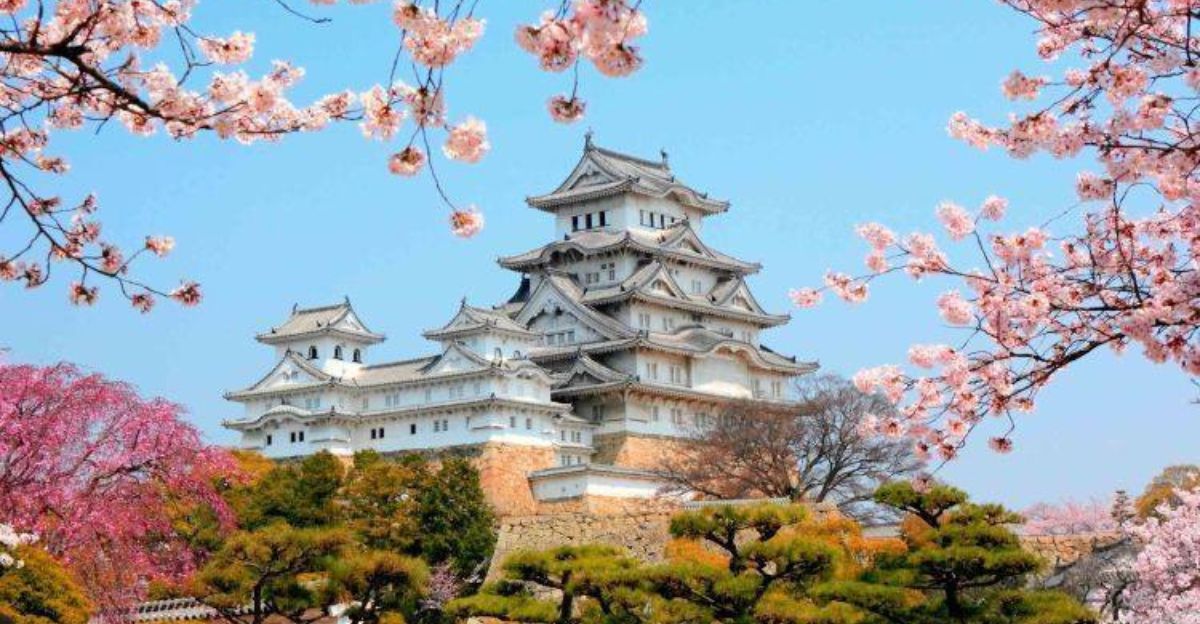
Known as “Shirasagi-jō” or the “White Heron Castle,” this castle traces back to 1333, when Akamatsu Norimura built a simple fortification atop Himeyama hill. Over centuries, legendary figures like Toyotomi Hideyoshi and Ikeda Terumasa contributed to its transformation: Hideyoshi added an early keep in 1581, while Terumasa completely rebuilt the fortress between 1601 and 1609, giving it the iconic five-story central keep seen today.
Himeji Castle comprises a network of 83 buildings interlinked in a maze-like layout designed to foil invaders. Its many arrow slits and loopholes allowed for defense with both bow and firearm, while the thick white plaster exterior is not only fire-resistant but also gives the castle its distinctive birdlike appearance, said to evoke a heron in flight.
4. Hunedoara Castle – Romania
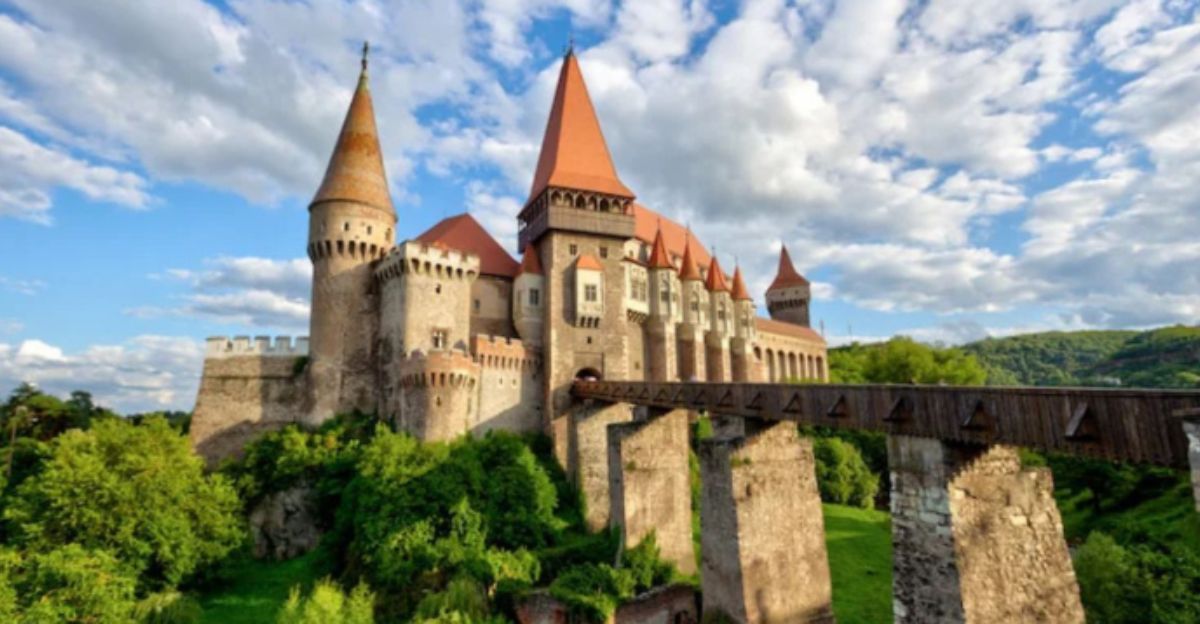
Also known as Corvin Castle or Hunyad Castle, its storied origins date to the 15th century, when the military leader John Hunyadi expanded a former keep atop a lofty rock above the Zlaști River in Hunedoara, transforming it into a grand Renaissance-Gothic fortress. The site had fortifications since at least the late 13th century, but its true fame began after 1440, when the Hunyadi family received the estate and John Hunyadi initiated massive renovations.
The structure was enlarged with tall towers, turrets, and a double-walled perimeter for enhanced security. After its initial glory period, the castle fell into decline and suffered major damage, notably a devastating fire in 1854, sparked by lightning, which destroyed much of its wooden interior. Restoration efforts in the 19th century saw craftsmen blend original Gothic-Renaissance elements with fanciful reconstructions, giving the castle its fairy-tale appearance seen today.
5. Alhambra – Spain
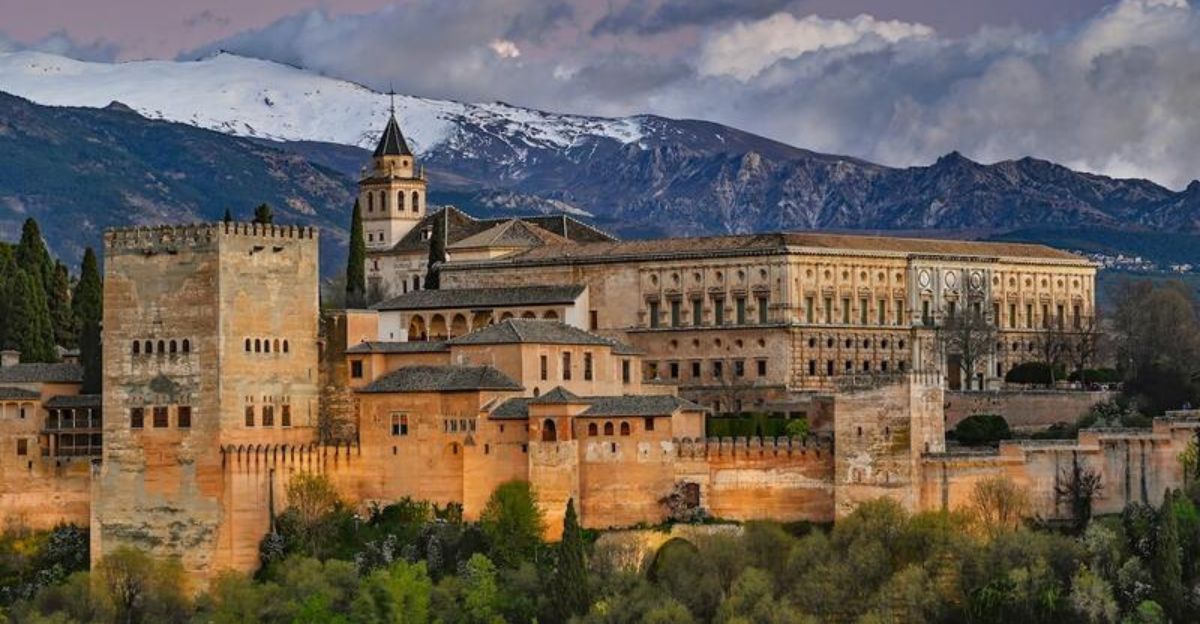
Perched atop the Sabika hill in Granada, Spain, is one of the world’s finest and best-preserved monuments to Islamic architecture and medieval palace-fortresses. Its history spans more than a millennium. It began as an 11th-century fortress before being transformed into a palatine city by Muhammad I Ibn al-Ahmar in 1238, the founder of the Nasrid dynasty, the last Muslim rulers of Spain.
The 13th and 14th centuries marked the Alhambra’s golden age under Yusuf I and Muhammad V, who expanded and adorned the complex with exquisite palaces, gardens, towers, hammams, and ingenious water systems. After the Christian conquest in 1492, the Catholic Monarchs made the Alhambra the royal court, where Columbus received approval for his America expedition.
6. Edinburgh Castle – Scotland
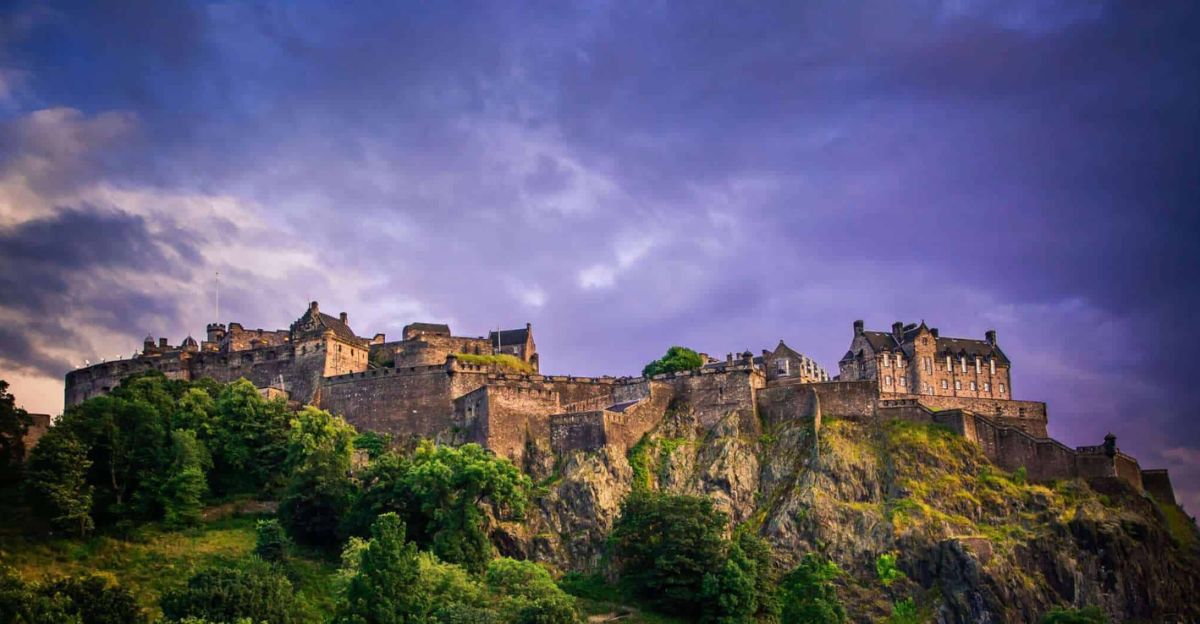
This remarkable castle towers above the city on the volcanic Castle Rock, commanding awe and respect as Scotland’s most iconic and historically significant fortress. Archaeological evidence reveals humans occupied the site for at least 3,000 years, with the summit first fortified by Iron Age warriors long before written records. It was recaptured from the English during the Wars of Scottish Independence after Sir Thomas Randolph’s daring 1314 raid, only to be destroyed by Robert the Bruce to prevent future English use.
With at least 26 recorded sieges, Edinburgh Castle claims the title of the most besieged place in Britain. It was resilient through the Lang Siege of 1571–1573 and the Jacobite Rising of 1745. Today, Edinburgh Castle is a national icon and UNESCO World Heritage Site, housing the Honours of Scotland (the Scottish crown jewels), the Stone of Destiny, and several regimental museums.
7. Malbork Castle – Poland
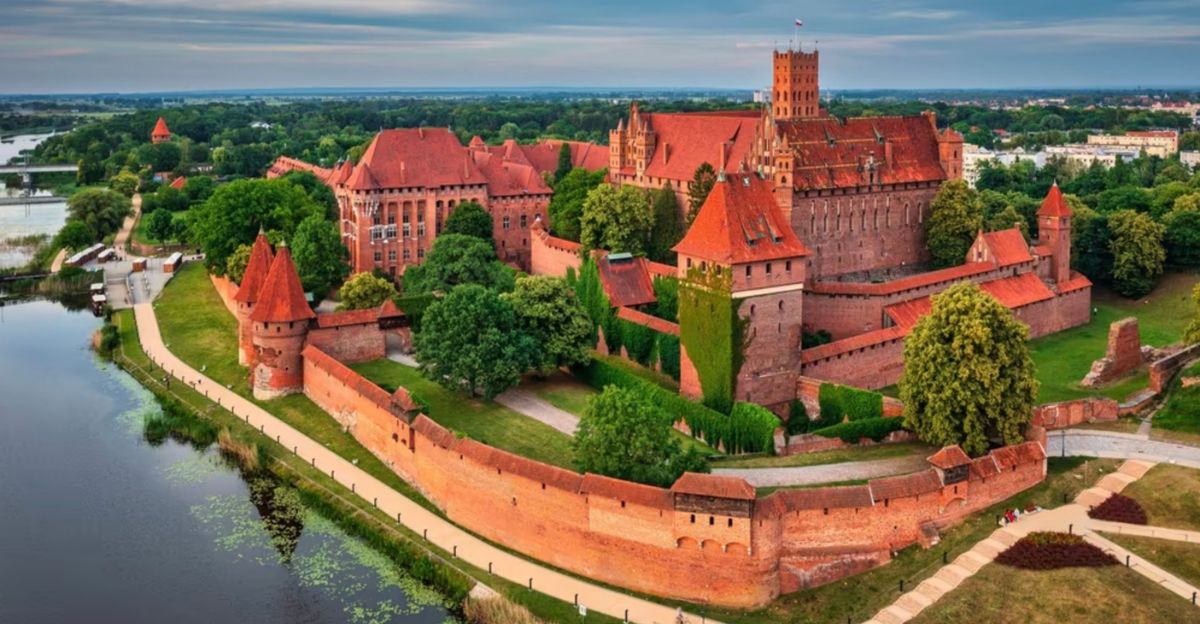
This castle is the largest brick castle in the world and a showcase of medieval Gothic architecture, situated on the east bank of the River Nogat in northern Poland. Built by the Teutonic Knights, a German Catholic military order, its construction began around 1274 and continued for over a century. As the Teutonic Order’s territory grew in influence in the 14th century, Malbork expanded into a vast complex comprising the High Castle (monastic center), Middle Castle (administrative and residential quarters), and Outer Bailey (support buildings such as stables, armories, and workshops).
Spread over approximately 21 hectares, Malbork’s design is marked by towering red-brick walls, moats, pointed arches, ornate towers, and intricate decorative details. Designated a UNESCO World Heritage Site in 1997, Malbork Castle remains an emotional and architectural symbol of Central European history.
8. Xativa Castle – Spain
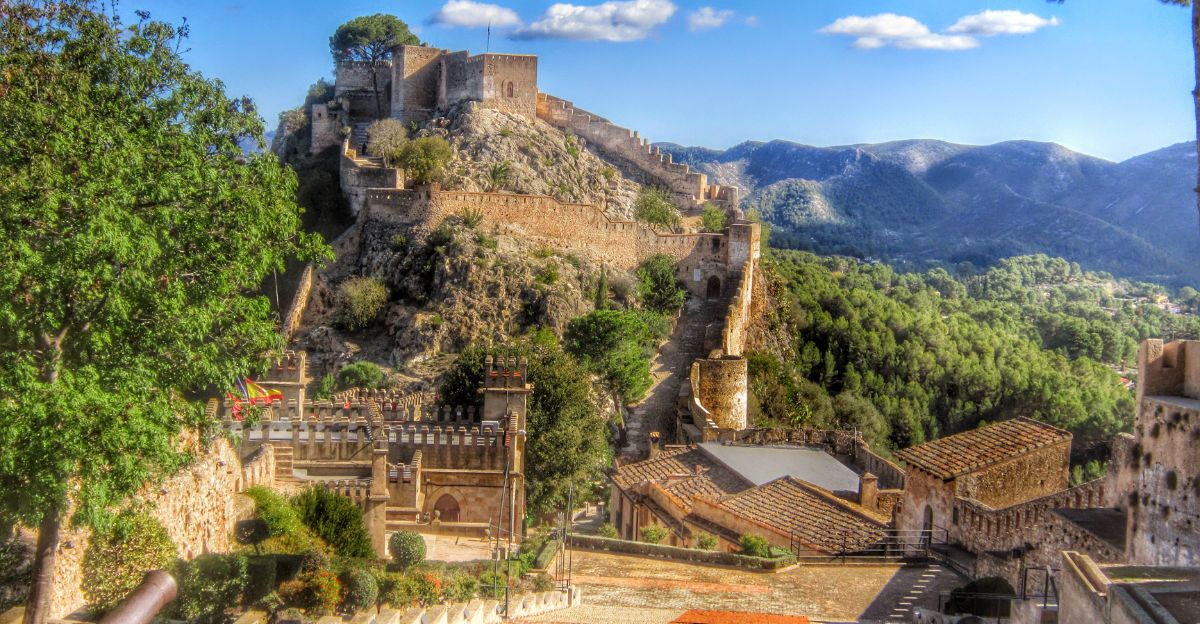
Castillo de Xàtiva is a spectacular twin fortress set on the Sierra del Castell hill overlooking the city of Xàtiva in Valencia, Spain. It is divided into two distinct sections: the older Castell Menor, built on Iberian and Roman foundations, and the larger Castell Major, constructed in the medieval period. The Castell Menor hosts remnants of Iberian and Roman masonry and is steeped in legend, including the story that Hannibal, the Carthaginian general, planned his campaign against Saguntum here, and his son was born in Xàtiva in 218 BC.
The castle played vital roles through centuries of conflict and conquest, particularly during the Islamic period (Al-Ándalus), when it was expanded and fortified, and later under the Almoravid and Almohad dynasties in the 11th and 12th centuries. It became a key military and political center in the wars between the Kingdom of Valencia and Castile. It was the site of sieges and uprisings during the Revolt of the Brotherhoods and the War of the Spanish Succession.
King James I of Aragon captured the castle in 1244 after a lengthy siege, marking its transition from Muslim to Christian hands and a consolidation of royal authority in Valencia.
9. Conwy Castle – Wales
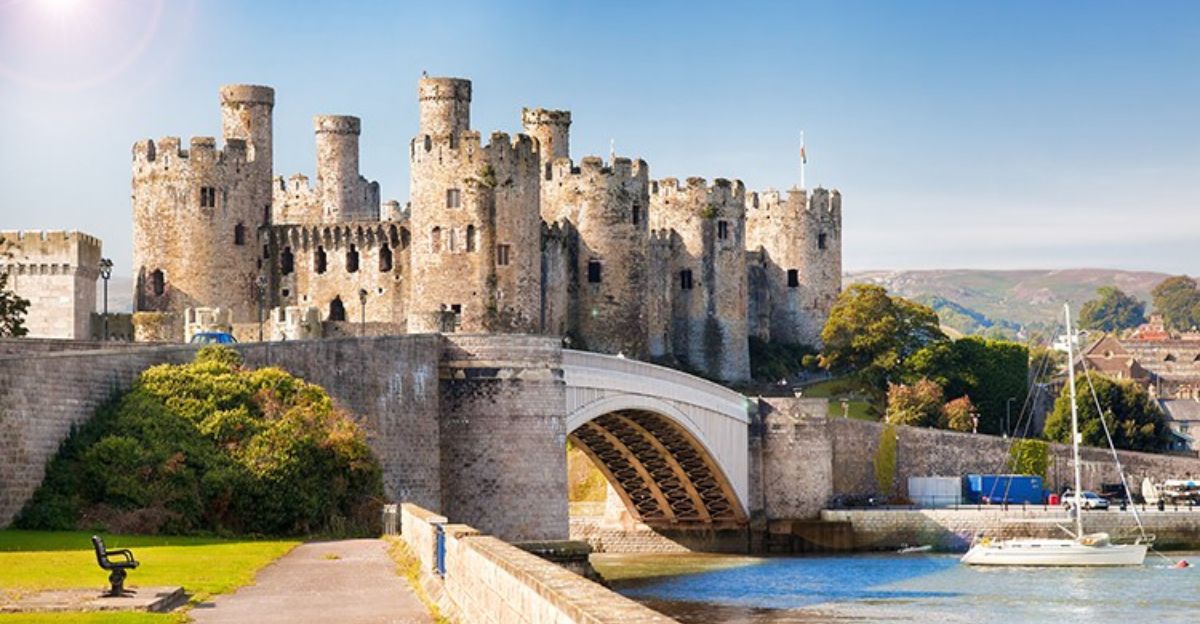
UNESCO hails this remarkably preserved medieval fortress in North Wales as one of Europe’s greatest masterpieces of 13th- and early 14th-century military architecture. Commissioned by King Edward I, construction began in 1283 and lasted just four years, an impressive feat involving up to 1,500 craftsmen and led by master architect James of St. George.
The castle consists of Inner and Outer Wards separated by a cross-wall, enabling each part to hold out if the other fell. Eight massive round towers, with arrow slits and battlements, fortify the walls, along with two fortified barbicans guarding entryways. Conwy Castle is an enduring legacy of English medieval might today, offering complete ramparts to walk and panoramic views over the town, river, and Welsh hills.
10. Castel Sant’Angelo – Italy
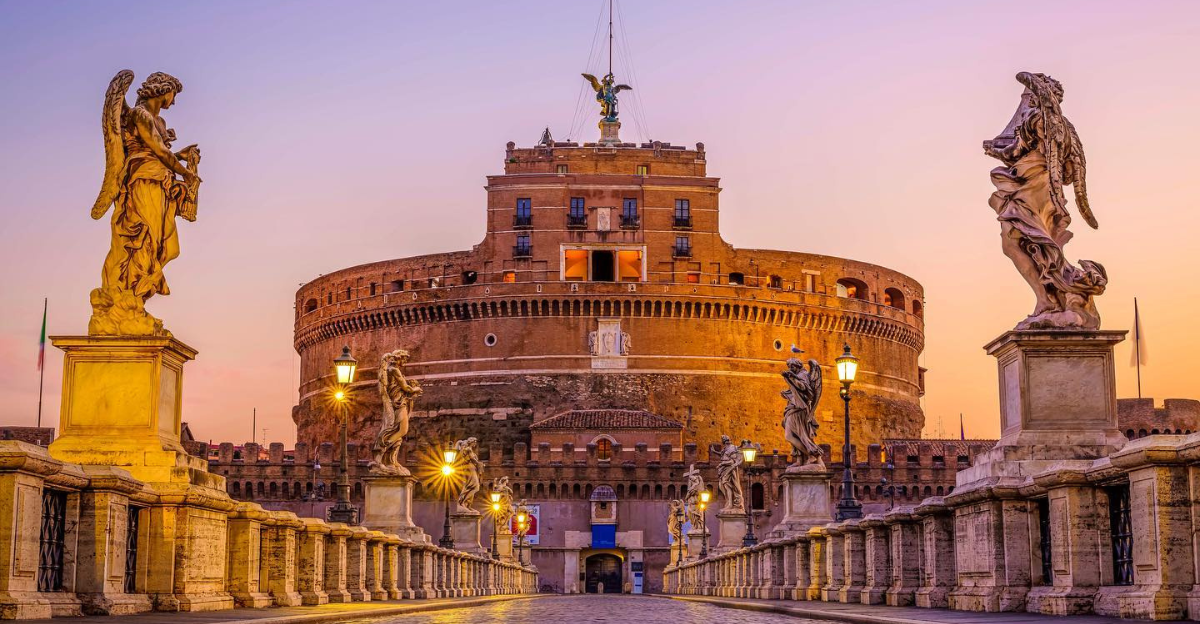
This remarkable castle, also known as the Mausoleum of Hadrian, was initially constructed between 123 and 139 AD as a towering mausoleum for Emperor Hadrian and his family. Inspired by earlier Roman imperial tombs, its cylindrical structure became an enduring symbol of Rome’s might and memory. By the 5th century, the mausoleum had been incorporated into Rome’s defensive walls and transformed into a formidable military fortress. Its strategic position guarding the Ponte Sant’Angelo and the city’s approach ensured its use as a key post during sieges and upheavals.
The popes, recognizing its strength, further fortified the castle in the 14th and 15th centuries and connected it to St. Peter’s Basilica with a special passage, the Passetto di Borgo, for escape during emergencies such as the infamous Sack of Rome in 1527. Over centuries, Castel Sant’Angelo has been a mausoleum, defensive bastion, papal sanctuary, prison, barracks, and, since 1901, a museum displaying weaponry, ceramics, paintings, and statuary within its walls.
11. Krak des Chevaliers – Syria
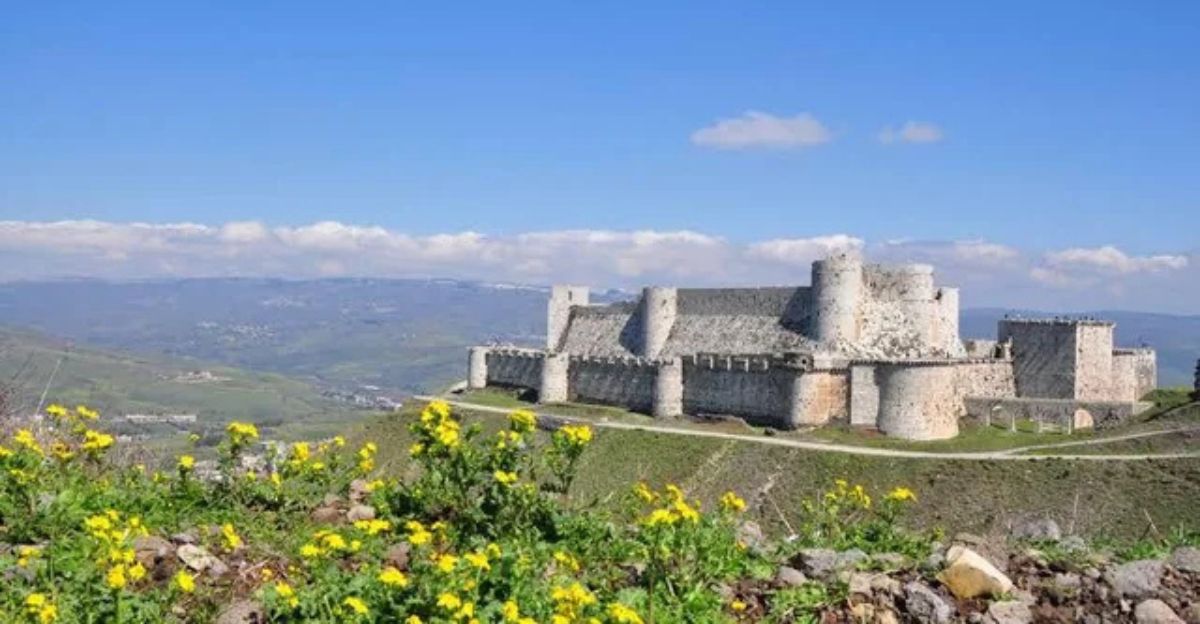
Krak des Chevaliers (Qal’at al-Hosn), perched atop a strategic hill west of Homs, Syria, is regarded as one of the most magnificent and best-preserved Crusader fortresses. Founded as an 11th-century stronghold by the Emir of Aleppo, the site gained international prominence when the Knights Hospitaller took possession in 1142. Krak des Chevaliers was the linchpin of Crusader authority along the border of the County of Tripoli, able to house garrisons of up to 2,000 men. Its thick walls, engineered for five-year sieges, allowed the Hospitallers to exact tribute and control key routes.
The outer circuit stands over 30 feet high with powerful projecting towers, an innovation influenced by Crusader ingenuity and adaptations from Muslim fortifications, such as those seen at Aleppo. Designated a UNESCO World Heritage Site in 2006, Krak des Chevaliers is a monument to cross-cultural innovation, the Crusader story, and centuries of warfare. The Syrian Civil War caused some damage, but significant conservation efforts have been undertaken since government forces retook the site in 2014.
12. Chillon Castle – Switzerland
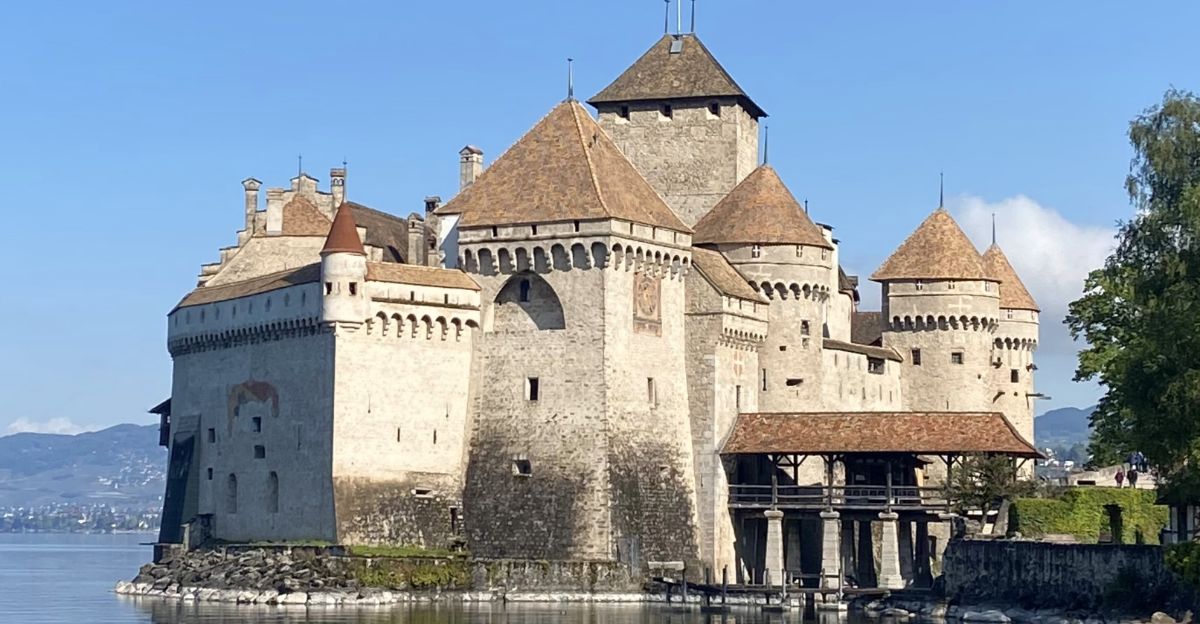
Set dramatically on a rocky islet along Lake Geneva near Montreux, Switzerland’s most visited historic monument is a breathtaking example of medieval fortification. Archaeological finds show occupation since the Bronze Age, and the oldest written record of the castle dates back to 1005 AD, though its earliest remaining structures date from the late 11th century.
Throughout the Middle Ages, the Counts of Savoy, especially Thomas I and Peter II, expanded Chillon Castle from a defensive outpost into a princely residence and administrative center. In 1536, during the Wars of Religion, the Bernese captured Chillon, giving it a new function as a state prison and arsenal. Chillon Castle has never been destroyed and has retained its ship-like outline for over 800 years.
13. Prague Castle – Czech Republic
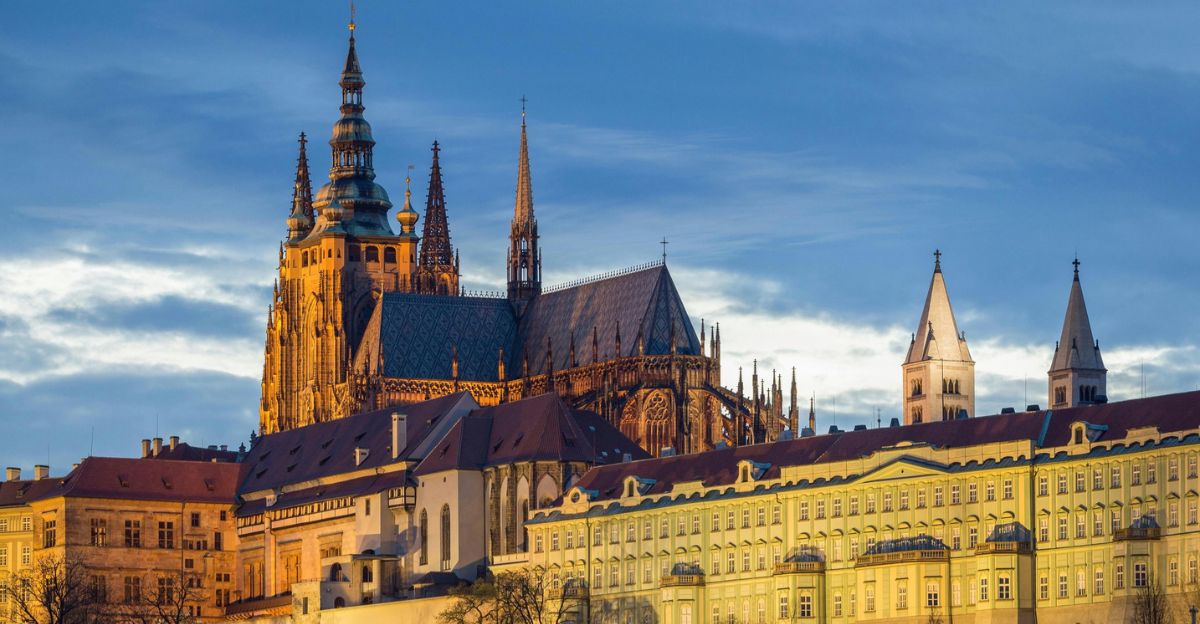
Prague Castle is the largest ancient castle complex in Europe and the official residence of the President of the Czech Republic, with roots extending back over 1,100 years. Founded around 880 AD by Prince Bořivoj of the Přemyslid dynasty, it sprawls across 70,000 square meters atop Hradčany Hill, overlooking the Vltava River, and incorporates palaces, churches, gardens, and fortifications.
The earliest parts of the complex date from the late 9th and early 10th centuries and highlight the early Romanesque phase, with thick stone walls and fortress-like profiles meant for defense and permanence. The massive Vladislav Hall, added by King Vladislaus II Jagiellon in the late 15th century, marked the Renaissance transition and is famed for its flamboyant ribbed vaulting.
Today, as a UNESCO World Heritage Site, the castle is home to the Czech Crown Jewels, national treasures, and vibrant cultural exhibitions, which attract millions of visitors annually.
14. Leeds Castle – England
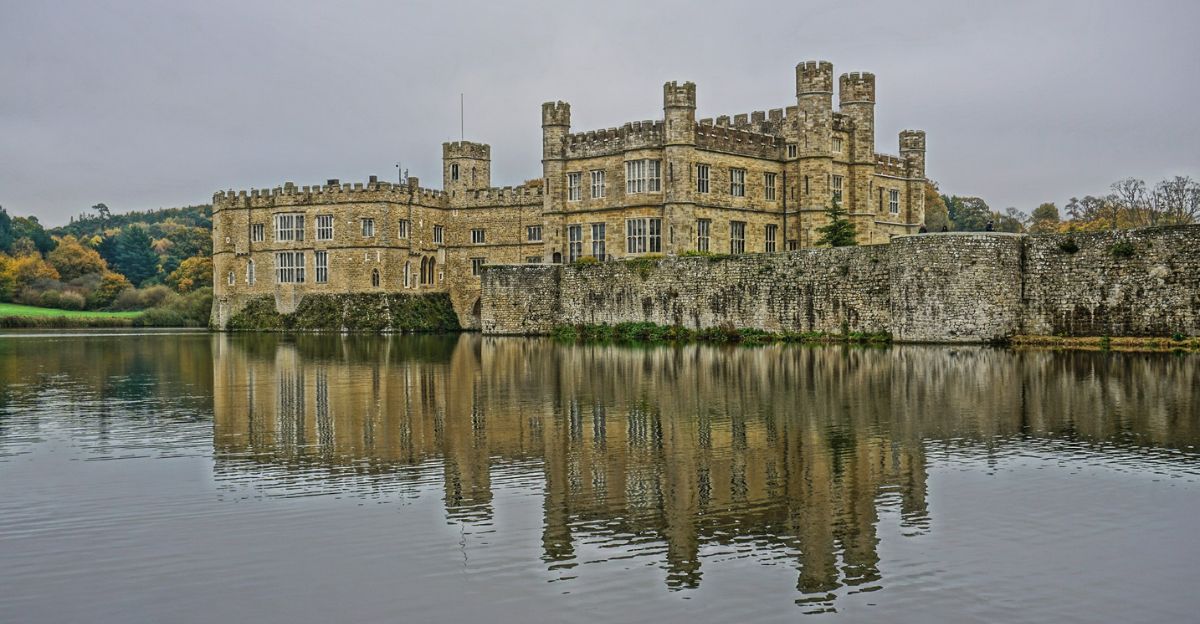
Originally built in 1119 by Robert de Crevecoeur as a Norman keep on two small islands formed by the River Len, its fortified position provided strong natural defenses, making it a vital military asset in southern England. The castle’s fortunes shifted dramatically in 1278 when it was acquired by Queen Eleanor of Castile, wife to Edward I, who rebuilt and expanded it into a royal palace with a formidable barbican and extensive moats.
Over subsequent generations, Leeds Castle served as a favored residence of six English queens and King Henry VIII, who transformed it further as a palace for his first wife, Catherine of Aragon, adding luxurious apartments and structural modifications typical of Tudor style.
15. Spiš Castle – Slovakia
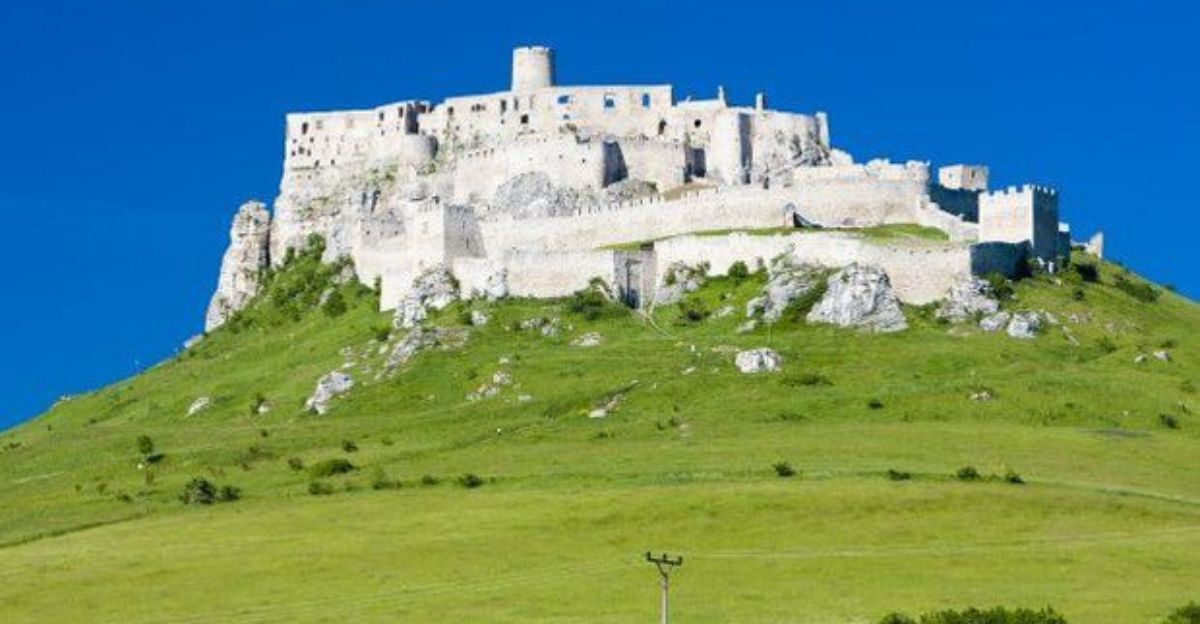
Established in the 12th century above the town of Spišské Podhradie, on the site of earlier fortifications, it evolved first as a border fortress and later into a palatial residence and seat of regional power for Szepes County. Built as a Romanesque stone fortress in the early 13th century, this castle has never been captured by direct assault; instead, it has changed hands through treaties or bribery.
Ownership passed from Hungarian kings to the influential Szapolyai, Thurzo, and Csáky families, each adding their architectural preferences across Gothic and Renaissance styles. A massive expansion doubled the castle’s size in the 14th century, and a late Gothic chapel was added in 1470. Spiš Castle was abandoned after a fire in 1780 and remained in ruins; restoration work and archaeological research in the 20th century have helped stabilize and partially reconstruct key sections.
16. Mont Saint-Michel – France
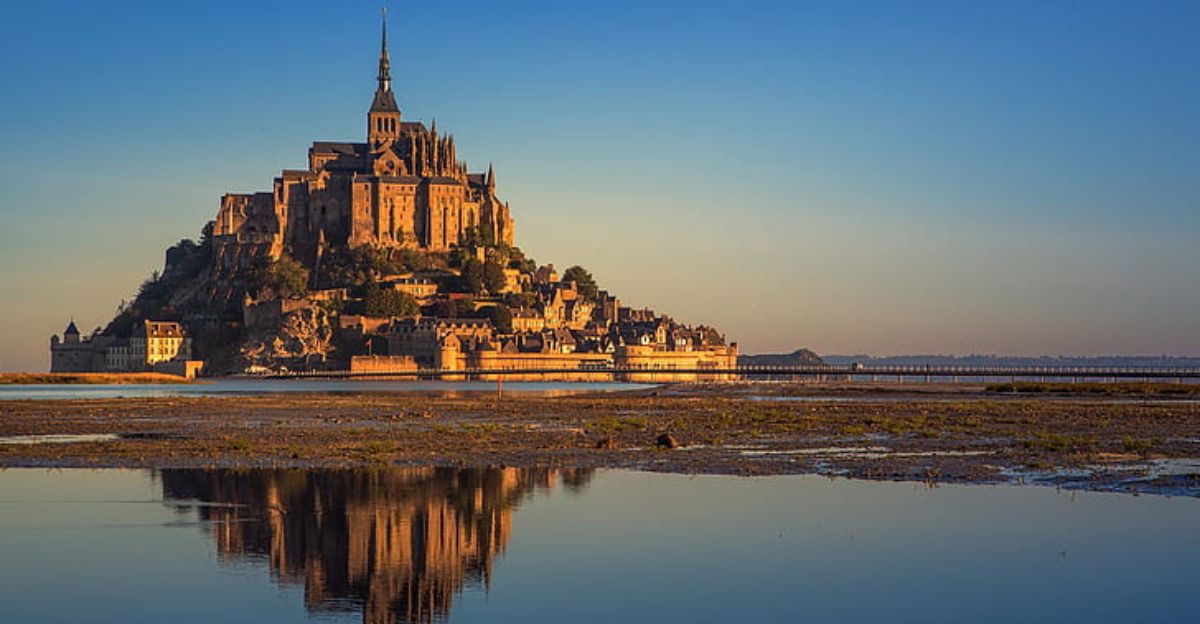
This castle is a majestic tidal island off the coast of Normandy, renowned worldwide for its soaring Gothic abbey and unique blend of nature, history, and architecture. Legend holds that in 708, the Archangel Michael appeared to Bishop Aubert of Avranches, ordering him to build a sanctuary atop the granite mount, then Mont Tombe. The first church was built, later expanded by Benedictine monks who established it in 966, and quickly became a major pilgrimage site throughout medieval Europe.
The original Romanesque church, completed in the early 11th century by William of Volpiano, was later joined by Gothic marvels as donations from French kings, most notably Philippe Auguste, funded ambitious extensions after fire and warfare. Even as an English stronghold sat nearby on Tombelaine, Mont Saint-Michel resisted occupation and remained a symbol of French autonomy. Later, it became a prison under Napoleon before restoration as a historic monument in the 19th century, thanks in part to Victor Hugo’s passionate campaign.
17. Predjama Castle – Slovenia
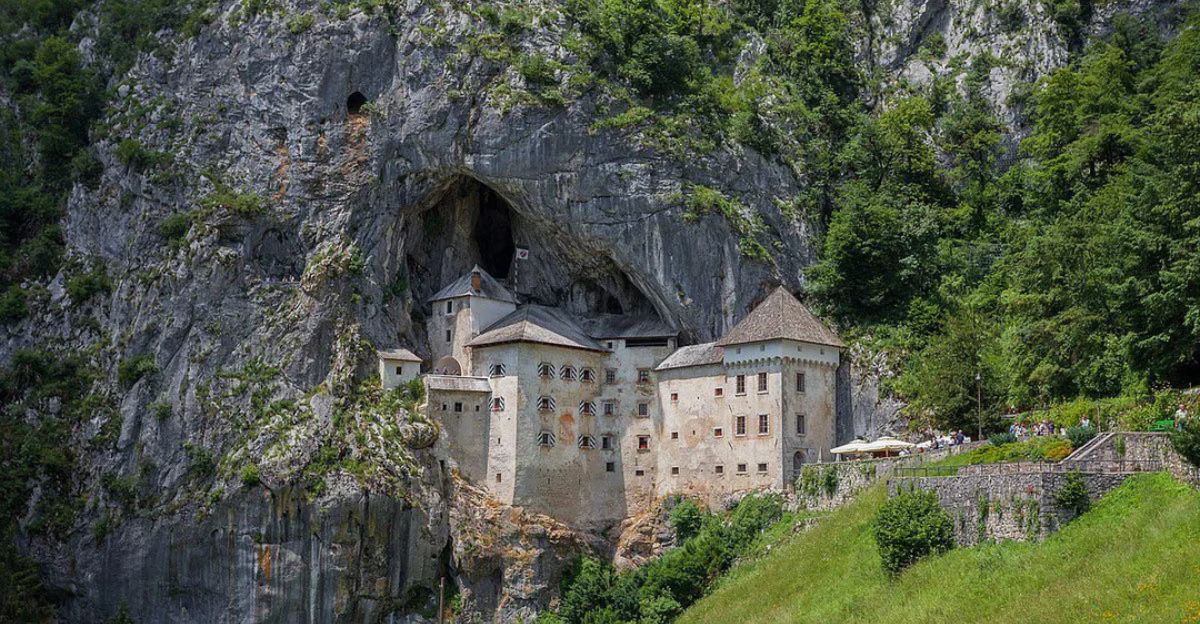
This castle is the world’s largest cave castle and one of Europe’s most visually dramatic and ingeniously designed fortresses. Built into the mouth of a 400-foot-high vertical limestone cliff, it fuses natural rock and architecture, making it nearly impregnable and truly unique. Its origins date back to at least 1202, with the first fortress built and rebuilt multiple times. It took its present Renaissance form in 1570 after an earthquake destroyed the medieval structure.
Predjama Castle gained legendary status as the lair of Knight Erasmus of Lueg, a 15th-century robber baron and folk hero whose year-long siege and Robin Hood-like exploits are part of Slovenian lore. Baron Philipp von Cobenzl’s Renaissance reconstruction of 1570 integrated the castle’s stone walls directly with the cave, forming hidden rooms, storage areas, and escape tunnels.
18. Bran Castle – Romania
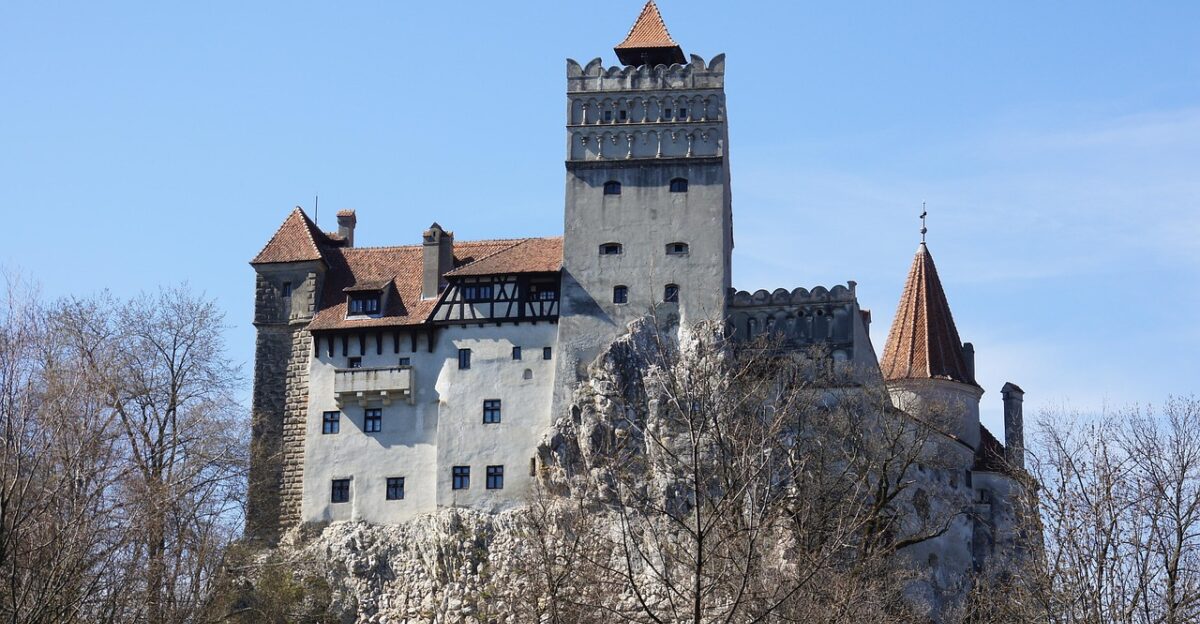
Castelul Bran is perched atop a rugged rock at the edge of Transylvania, legendary for the Dracula myth. While often called “Dracula’s Castle” due to its resemblance to the descriptions in Bram Stoker’s novel, there is no direct historical link to Vlad the Impaler, though the fortress lay on routes he frequented and played a role in regional power struggles.
The site’s origins trace to the 13th century, when Teutonic Knights built a wooden outpost; in 1377, the Saxons of Kronstadt (Brașov) received royal permission to erect a stone fortress, completed in 1388, meant to guard the critical mountain pass between Transylvania and Wallachia. Today, Bran Castle operates as a museum featuring collections on medieval warfare and the myth of Dracula, exhibiting weapons, armor, art, and furniture spanning centuries of occupancy.
19. The Tower of London – England
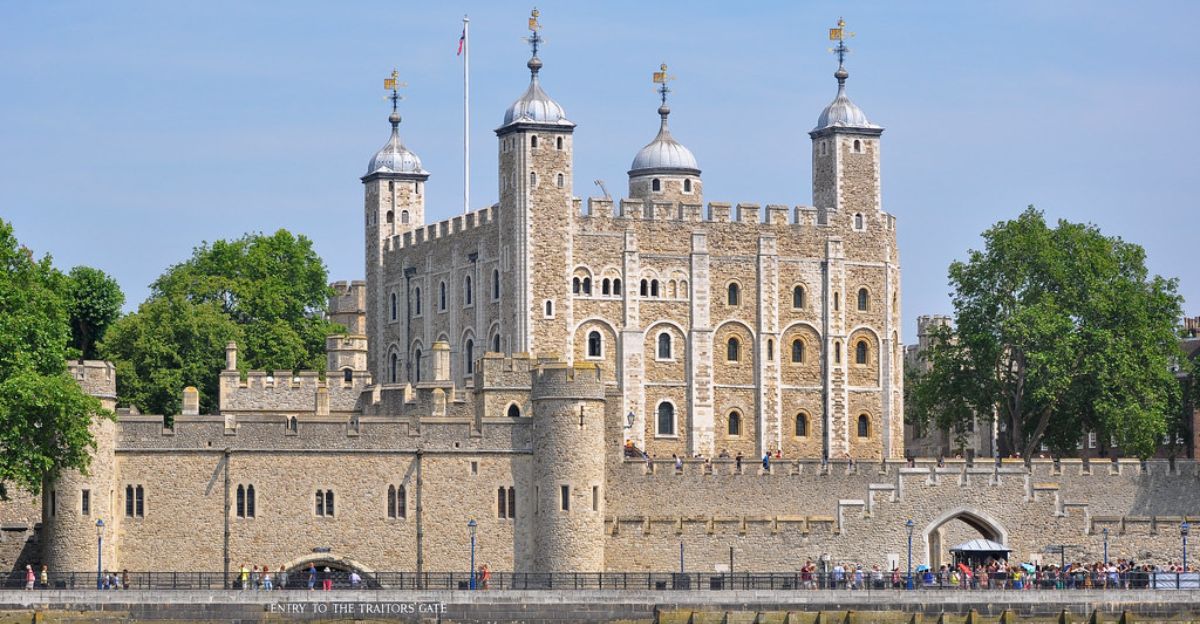
Built by William the Conqueror in the 1070s to dominate the skyline and assert Norman control, its massive White Tower is the quintessential example of late 11th-century Norman military architecture, influencing castle design throughout England and Europe. The Tower has served diverse, sometimes chilling functions throughout its long history. As the most secure castle in England, it guarded the Crown Jewels (still housed here today), protected the monarch and royal possessions, and controlled access to London as the kingdom’s gateway.
It was the Royal Mint, arsenal, and official records and treasures repository. The Tower also became notorious as a prison and place of execution, the site of the deaths of Anne Boleyn, Catherine Howard, Lady Jane Grey, and many other historical figures.